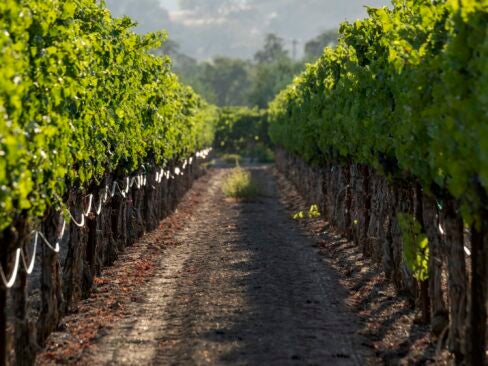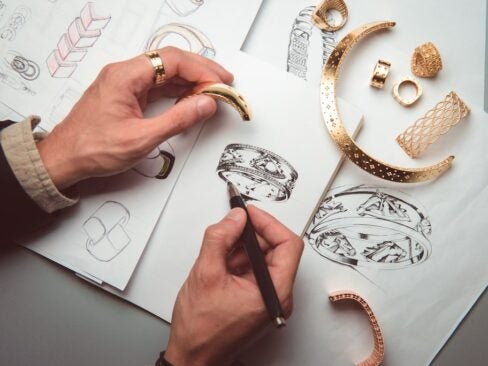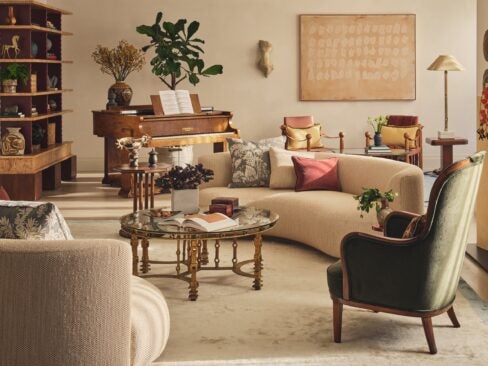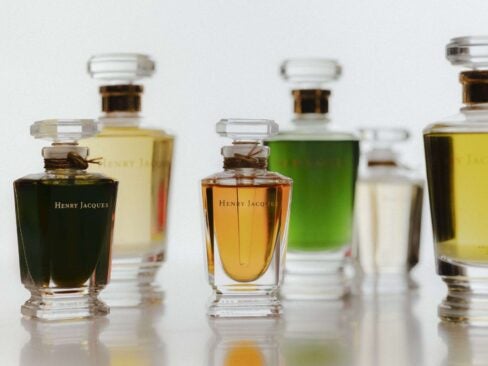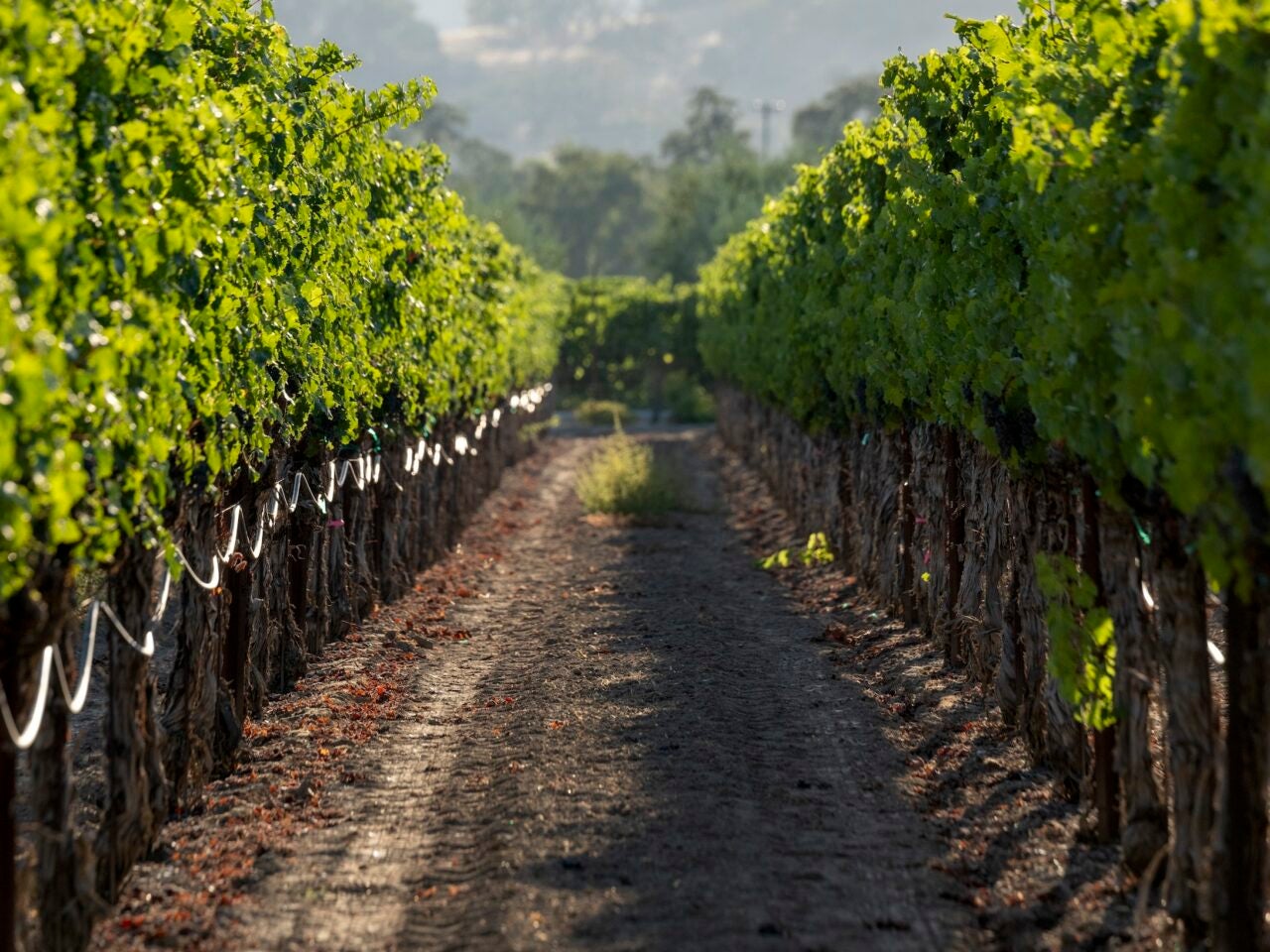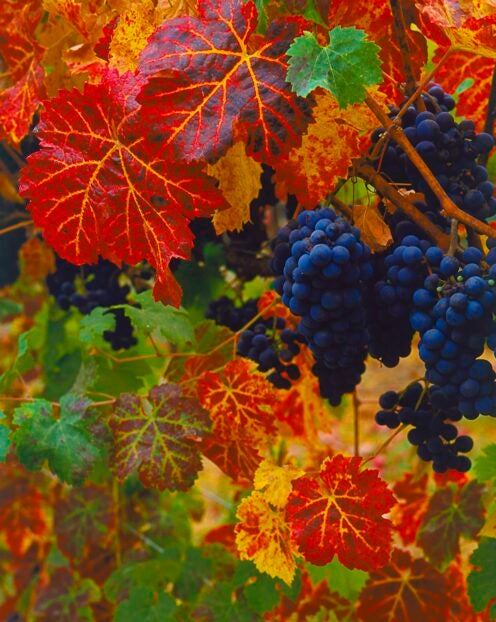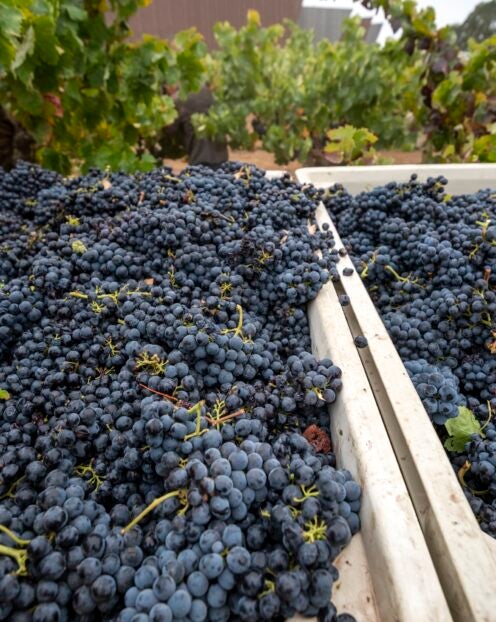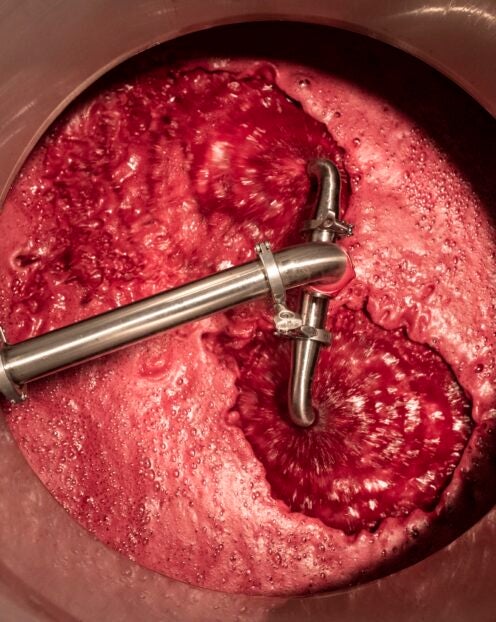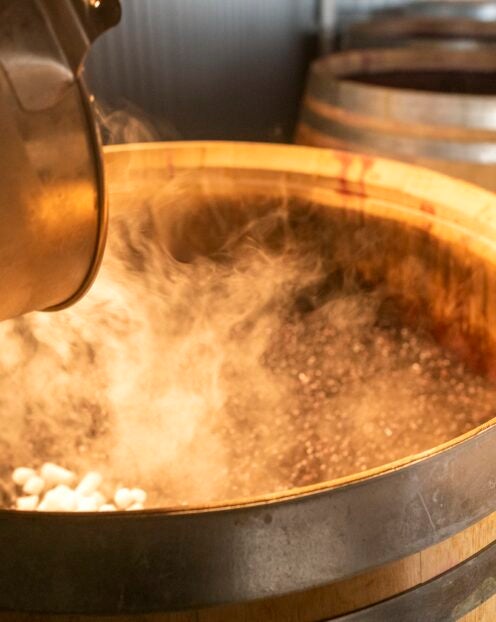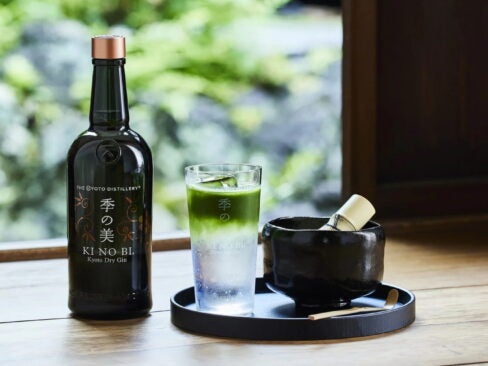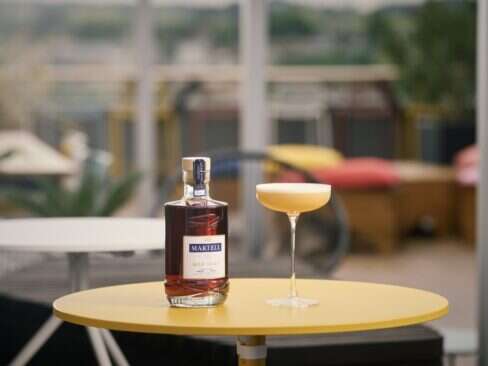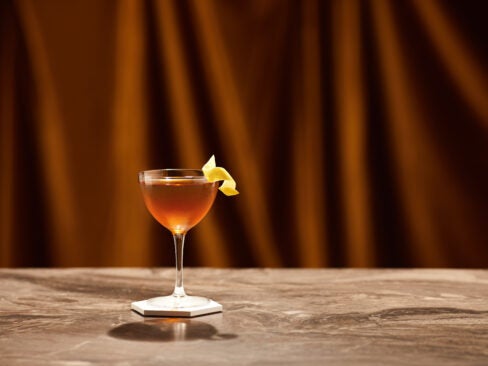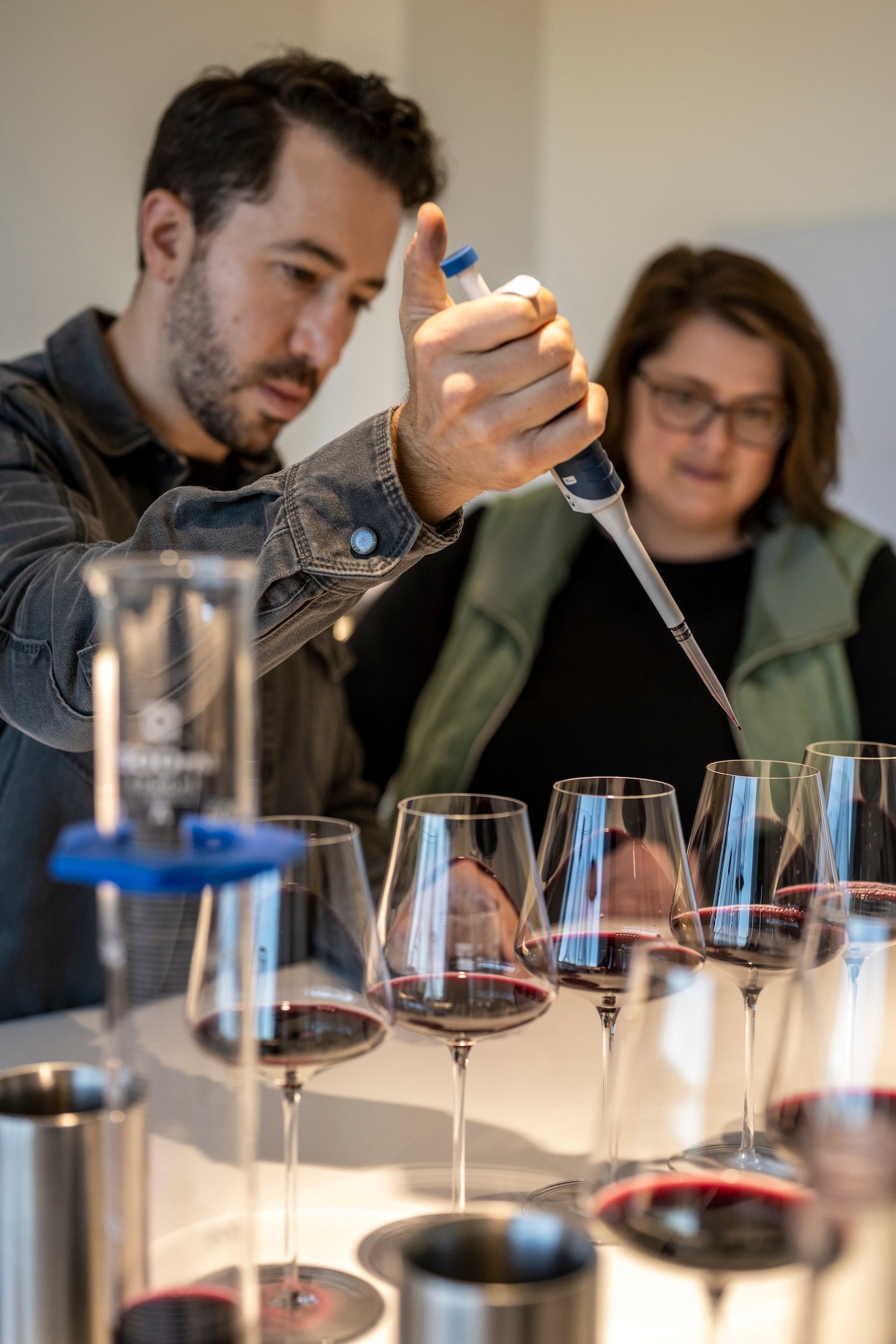
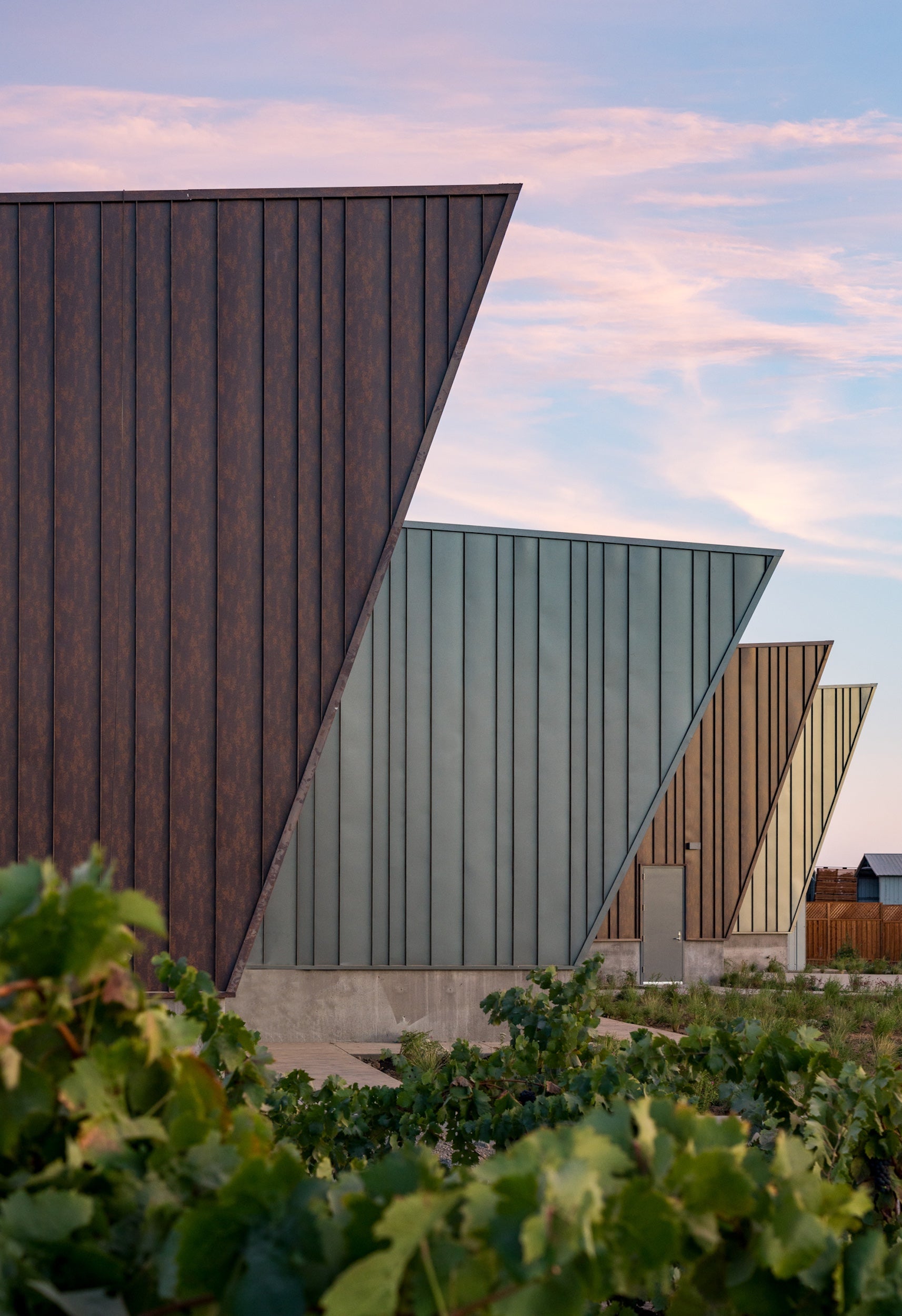
The heady, romantic scent of fermenting wine was in the air at Aperture Cellars, a sleek, architecturally stunning winery outside Healdsburg in Sonoma. Purple juice from ripe cabernet sauvignon grapes was slowly transforming into lush red wine in fermentation tanks. It was October and harvest season, and I was there to see how great red wines are made.
“A single thread goes through every element of what you do, from the vineyard to the winery to the bottle,” explained whiz winemaker Jesse Katz, who founded Aperture in 2009.
He turns grapes from a half-dozen top vineyards into rich, nuanced Bordeaux-style reds, celebrated single-vineyard cabernet sauvignons, cult malbecs, and bright, savory whites. Some highlight soil, others site — and all, especially the reds, wow critics like me. His wines have garnered plenty of 100-point scores. “And 2024,” he said, “is a brilliant vintage, the best of my career.”
Everything depends first on the vineyard, and Katz farms prime sites in Sonoma’s Alexander Valley. “It’s much cooler than Napa,” he pointed out, “so wines have more verve and brightness.” Fog over his SJ Ranch vineyard plot allows slow ripening that translates into wines with a savory earthiness, for example, while ancient river gravels at non-irrigated Oliver Ranch produce vibrant wines with power and structure.
A hot sun beat down as we walked his prized Farrow Ranch vineyard, acquired in 2021. It’s like a big, beautiful bowl of vines, and the best plots on the steep, rocky, south-facing volcanic hillsides are the source of his most expensive cabernet.
The most important harvest decision is when to pick, which means identifying the right moment of ripeness. Katz was rushing to finish up Farrow Ranch because a heat wave threatened to turn grapes into overripe raisins. To preserve their balance and acidity, the team fanned out wearing headlamps to pick at 3 a.m. while grapes were cool. By dawn, they were at the winery.
Winemaking expertise and experience are also key. Katz has both, though he didn’t inherit the wine life. He discovered his vocation while accompanying his father, celebrated photographer Andy Katz, on trips to capture legendary vineyards with his camera.
By age 18, the younger Katz was hooked. Following study in California and Bordeaux, he worked at a winery in Argentina and the renowned Château Pétrus in Bordeaux; as assistant winemaker at Napa’s cult Screaming Eagle; and then ran Lancaster Estate and Roth in Sonoma while developing his own brand. He gained buzz when he created a custom wine for his friend Jessica Biel’s wedding to Justin Timberlake. All taught him other essential secrets: attention to every detail, the up-to-date technology needed for his own vision of precision winemaking, and the importance of publicity.
One morning, in the middle of winery bustle, Katz walked me through his winemaking process. It starts with three levels of sorting grapes to ensure only perfect ones make it to the fermenting vats. We hopped over hoses to watch workers dump clusters into the fancy de-stemmer that separated the grapes from the stems and onto a vibrating sorting table that removed hard and shriveled berries with a whoosh.
The eagle eye of the $100,000 optical sorter snapped 1,200 photos per second of grapes whizzing by on a conveyor. It uses infrared technology to compare each one to Katz’s color, size, shape, and density specifications, rejecting those that don’t measure up.
A gentle peristaltic pump (like the kind that moves fish to a different pond at a fishery) transfers whole berries into fermentation tanks set at 50° Fahrenheit, though Katz uses a mix of stainless steel, concrete, and oak tanks for the top cabernets. A four- to seven-day cold soak extracts color and tannin from the grape skins and will enhance the wine’s texture and structure. The pump in each tank automatically pumps the juice up and sprays it over the cap of grape skins that rise to the top for one to two minutes, every hour, 24/7.
Fermentation starts when native yeast on the grapes begins turning their sugars into alcohol. The wine looks purple and foamy and gives off a rich, fruity smell. The tank temperature is pushed up, and for 14 to 28 days, Katz fine-tunes the regime for each vat, which includes regular injections of oxygen through a venturi and adjusting tank temperature and the number and length of pump overs — all controlled with a smartphone or laptop. “It’s all very precise,” he explained. “I want soft, not rustic tannins and elegant silky textures.”
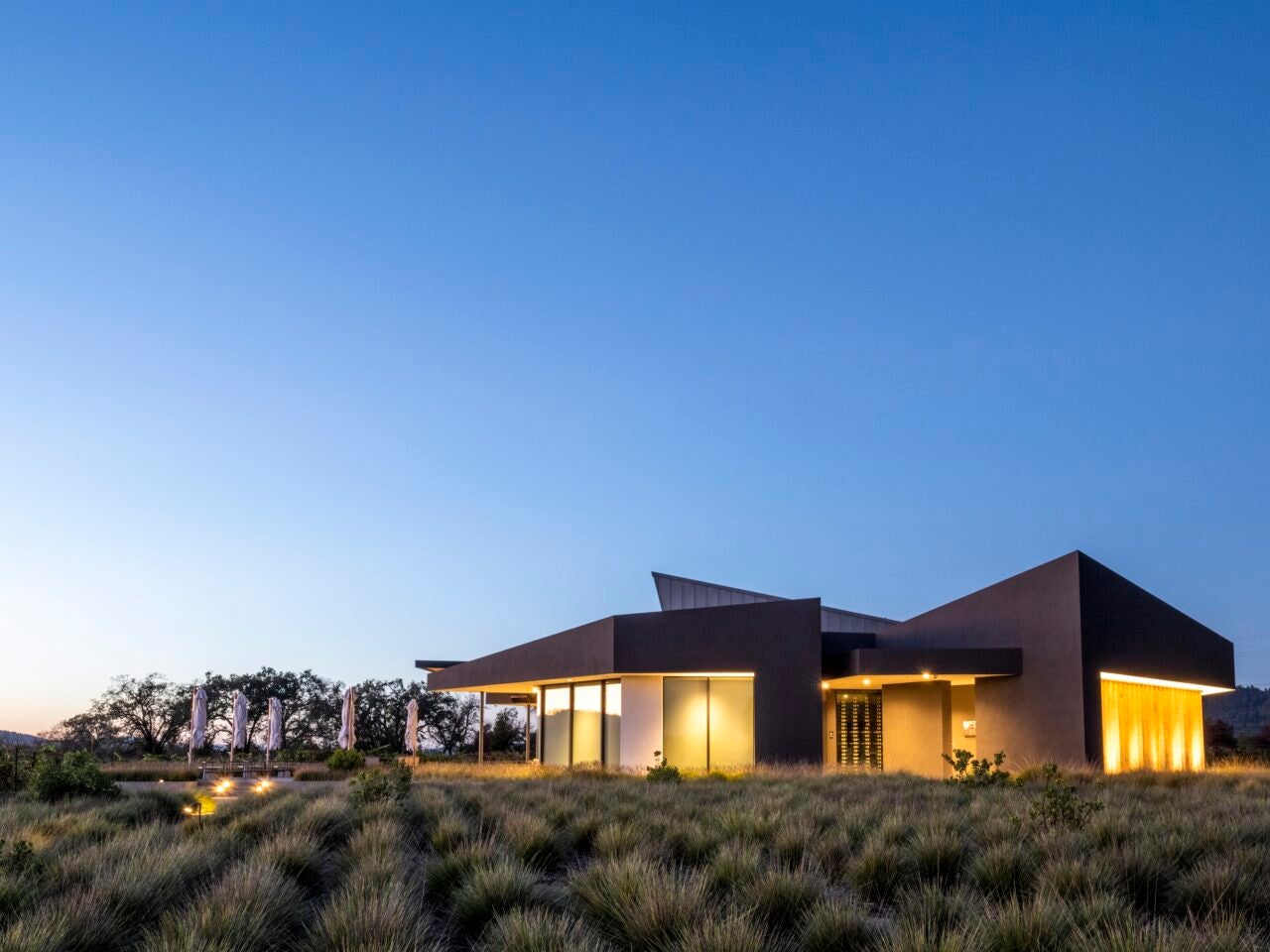
At the end of fermentation, he might extend maceration, soaking the wine on the skins longer for more richness and structure. He uses gravity to drain the wine into small 225-liter French oak barrels to age for 18 to 22 months until ready to be blended or bottled. The skins and seeds go into a press to squeeze out the remaining liquid. Some of that may make it into the final wine — Katz will decide.
But the final step is really assessing the quality of bottled wine. The perfect place is Aperture’s innovative hospitality center near the winery, which pays homage to analog cameras. An aperture-like skylight allows the ambience inside to change with the weather outside. Like the winery name, the design was inspired by Katz’s father, whose images adorn the walls and the wine labels.
Over dinner there, we savored Aperture’s intense, velvety, powerhouse 2018 SJ Ranch Cabernet and Katz’s dark, complex, simply stunning 2021 Devil Proof malbec from Farrow Ranch. Both showed just why Aperture Cellars is an essential source of great Sonoma wine.
